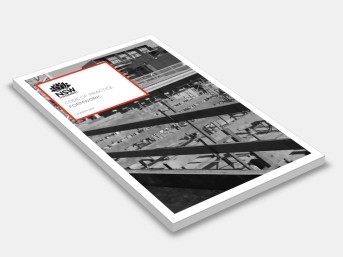Code of Practice Formwork
SafeWork NSW
The SafeWork NSW Formwork Code of Practice (this Code) on how to manage the risks associated with formwork is an approved code of practice under section 274 of the Work Health and Safety Act 2011 (WHS Act).
An approved code of practice provides practical guidance on how to achieve the standards of work health and safety required under the WHS Act and the Work Health and Safety Regulation (WHS Regulation).
A code of practice should be used by anyone who has a duty of care in the circumstances described in this Code. In most cases, following an approved code of practice would help achieve compliance with the health and safety duties of the WHS Act, in relation to the subject matter of the code. Like regulations, codes deal with particular issues however do not cover all hazards or risks that may arise. Duty holders are required to consider all risks associated with work, not only those for which regulations and codes exist.
Codes of practice are admissible in court proceedings under the WHS Act and WHS Regulation. Courts may regard a code as evidence of what is known about a hazard, risk, risk assessment or risk control and may rely on the code in determining what is reasonably practicable in the circumstances to which the code relates. For further information see the Safe Work Australia Interpretive Guideline The meaning of reasonably practicable.
Compliance with the WHS Act and WHS Regulation may be achieved by following another method if it provides an equivalent or higher standard of work health and safety than
the code.
An inspector may refer to an approved code when issuing an improvement or prohibition notice.
For the purpose of this Code, the term ‘formwork’ will be used to describe both formwork AND falsework, unless otherwise specified.
This Code is intended to be read by PCBUs who have management or control of formwork in the workplace. It includes information about specific control measures required under the WHS Regulation for formwork.
You should use this Code if you design, construct, erect, alter, maintain, dismantle or remove formwork.
This Code may be a useful reference for persons interested in duties that relate to construction work under the WHS Act and WHS Regulation.
You should read this Code in conjunction with the SafeWork NSW Code of Practice Construction Work.
This Code comprises eight sections as outlined below. At the start of each section is a list of any relevant sections from the WHS Act and/or clauses from the WHS Regulation, which can be referred to for more information.
Section 1: Introduction - what is formwork, managing risks associated with formwork, consultation and communication.
Section 2: Design and planning of formwork - steps involved, responsibilities, safety reports, preparation, modifications.
Section 3: System of work - information, instruction and training, safe work method statements, emergency plans and procedures.
Section 4: Types of formwork – conventional, modular, scaffolding, slip and jump forms, travelling forms.
Section 5: Common hazards and controls – ground conditions, surrounding structures, collapse, electrical hazards, plant and collision.
Section 6: Falls – fall protection, perimeter screens, guardrails, ladders and penetrations.
Section 7: Erecting, altering, stripping/dismantling formwork – foundations, wall and column forms, false decks, installation, alterations, stripping/dismantling.
Section 8: Slip and jump forms – entry and exit, trailing screens and platforms, climbing forms.
